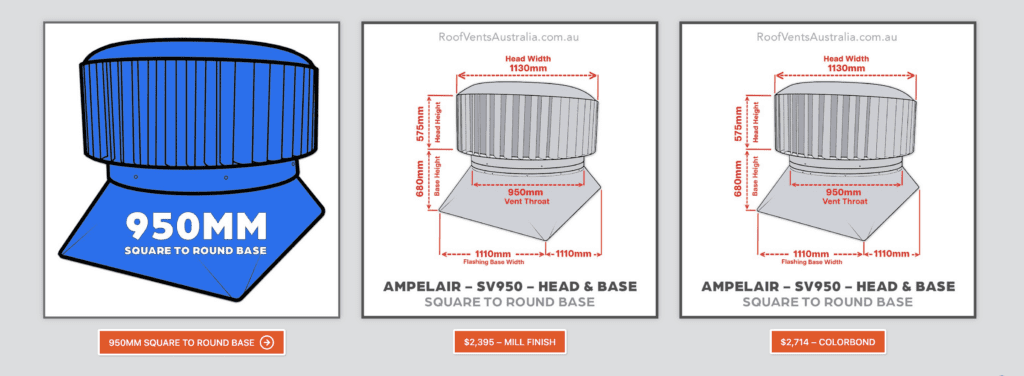Maximising Sustainability and Efficiency in Australian Homes: A Comprehensive Guide on Roof and Ventilation Solutions

Rain Heads Custom Made Shipped Free Australia Wide – Click Here >
Dambuster Rain Heads Shipped Free Australia Wide – Click Here >
Commercial Industrial Roof Vents 300mm-950mm – Click Here >
Eco-Friendly Roofing Insulation Shipped Free – Click Here >
Gutter Sumps Shipped Free Australia Wide – Click Here >
Introduction
In a world grappling with climate change and rising energy costs, homeowners are becoming increasingly conscious of sustainable and efficient solutions for their residences. In Australia, where the climate varies dramatically across states and territories, the task of maintaining a comfortable indoor living environment can be challenging. This article aims to address these challenges by focussing on various sustainable solutions in the context of Australian homes. We will cover a wide range of topics, from selecting certified roof insulation installers to using high-capacity rainwater heads, eco-friendly roof sheeting materials, and efficient ventilation systems.
Roof Insulation Installers: A Must for Efficient Homes
In Australia, heating and cooling account for about 40% of home energy use, making it the largest energy user in the average Australian home (Department of Industry, Science, Energy and Resources, 2021). Thus, proper insulation is crucial for Australian homes.
In hot climates, like the Northern Territory and parts of Western Australia, heat reduction roof vents can be highly effective. For cooler states such as Victoria and Tasmania, high-grade insulation material is vital. When choosing insulation, it’s not only about the material but also about the installation. It’s important to engage certified roof insulation installers who can ensure that the job is done effectively and safely, adhering to the Australian Standard AS/NZS 4859.1 (SAI Global, 2019).
High-Capacity Rainwater Heads: Combatting Australia’s Extreme Weather
Australia is subject to extreme weather events including tropical storms and heavy rainfalls. For states like Queensland, with a sub-tropical climate, and New South Wales, which experiences varying climatic conditions, high-capacity rainwater heads can be an essential addition. These systems help in effective drainage during high-intensity rainfall, reducing the risk of flooding and water damage. Research from the Bureau of Meteorology (2021) suggests that extreme weather events are expected to increase, making it imperative to opt for solutions that can withstand such events.
Roof Sheeting for Agricultural Use: Tailoring Solutions for Rural Australia
In rural settings, such as the agriculture-heavy states of South Australia and Western Australia, the need for specialized roof sheeting is often overlooked. However, the roof sheeting used in agricultural settings must be durable, cost-effective, and ideally eco-friendly. Recently, advancements have been made in eco-friendly roof sheeting materials like recycled metal and plant-based alternatives, which not only meet these requirements but also reduce the carbon footprint.
Ventilation: Beyond the Basics
When it comes to ventilation, the focus often lies in common living areas, neglecting spaces like toilets and laundry rooms. However, it’s crucial to have efficient toilet exhaust vents and laundry room exhaust fans, especially in humid climates like those in Queensland and the Northern Territory. Sub-standard ventilation in these areas can lead to mould growth, thereby adversely affecting indoor air quality.
Ceiling Ventilation Solutions
With modern homes getting more airtight for energy efficiency, ceiling ventilation solutions are gaining popularity. Low-cost roof ventilation options are available that can significantly improve air circulation. Advanced air circulation roof vents are not just cost-effective but also energy-efficient, making them an excellent choice for states where electricity costs are high.
Eco-Friendly Roof Sheeting Materials
As the world is becoming more conscious of environmental impacts, sustainable building materials are being developed. Eco-friendly roof sheeting materials like recycled aluminium, solar roof tiles, and cool roofing options are beneficial both for the environment and for long-term cost savings. According to a study by the University of Melbourne (2020), cool roofing can reduce internal temperatures by up to 3°C, providing significant savings on cooling costs during the hot Australian summers.
Putting It All Together: A Case for Integrated Systems
Combining various elements like heat reduction roof vents, high-capacity rainwater heads, and eco-friendly roof sheeting can provide a comprehensive solution for Australian homes. An integrated system ensures that all parts work together to provide a comfortable, energy-efficient, and sustainable living environment.
Conclusion
The Australian climate demands unique solutions that are tailored for each state and territory. By focussing on sustainable and efficient systems, homeowners can not only contribute positively to the environment but also enjoy long-term financial benefits. Whether you are looking for certified roof insulation installers or interested in high-capacity rainwater heads, the goal should be the same: creating a home that stands up to the challenges of the Australian climate while being sustainable and efficient.
So, what are you waiting for? It’s time to make informed choices and invest in solutions that will serve you well for years to come. Choose wisely, live sustainably.
References
- Department of Industry, Science, Energy and Resources. (2021). Energy use in the Australian residential sector 1986–2020.
- SAI Global. (2019). AS/NZS 4859.1: Materials for the thermal insulation of buildings.
- Bureau of Meteorology. (2021). State of the Climate.
- University of Melbourne. (2020). The benefits of cool roofs in Australian residential homes.
Disclaimer: It is advisable to consult professionals for specific advice tailored to your individual circumstances.
